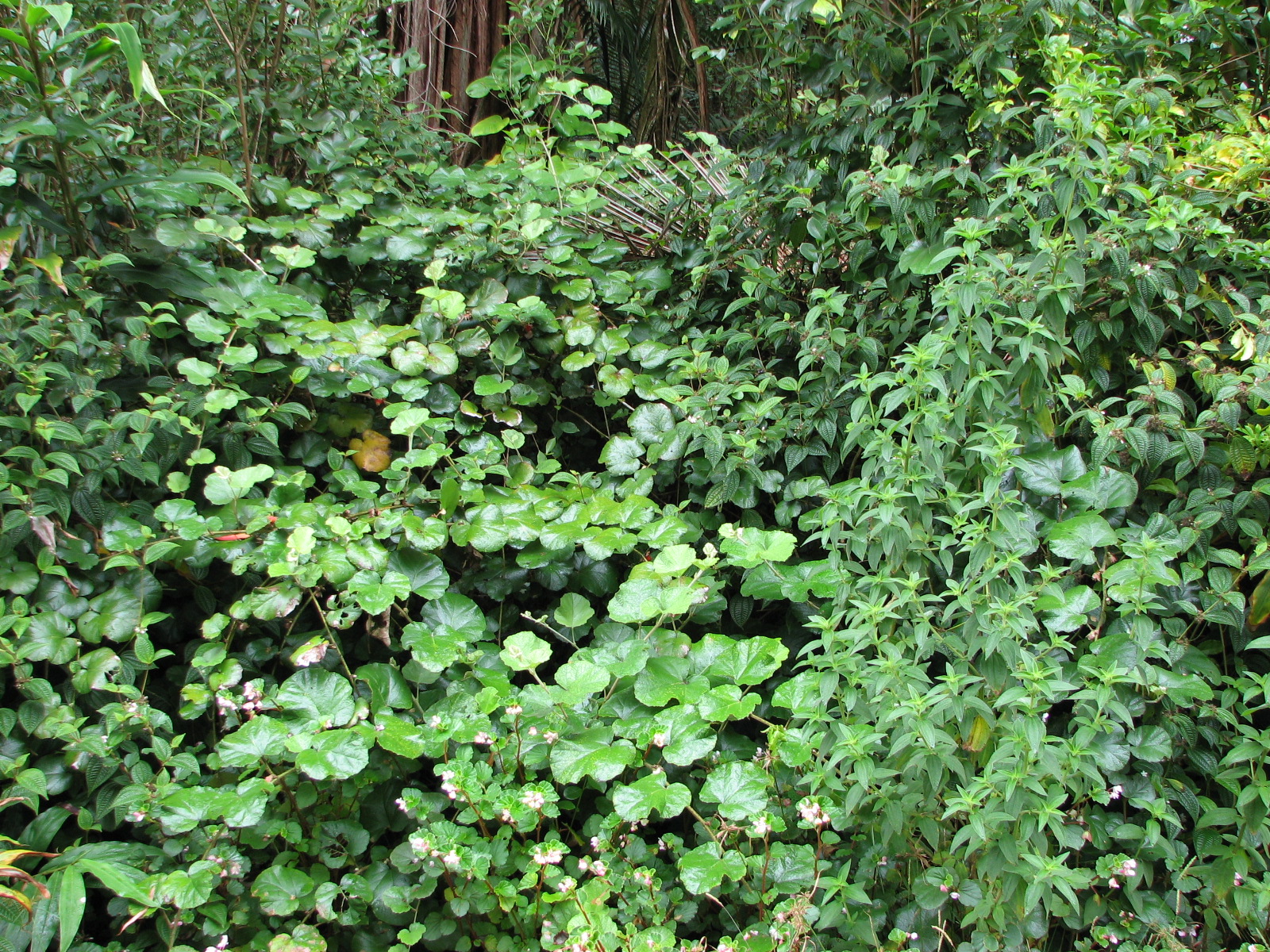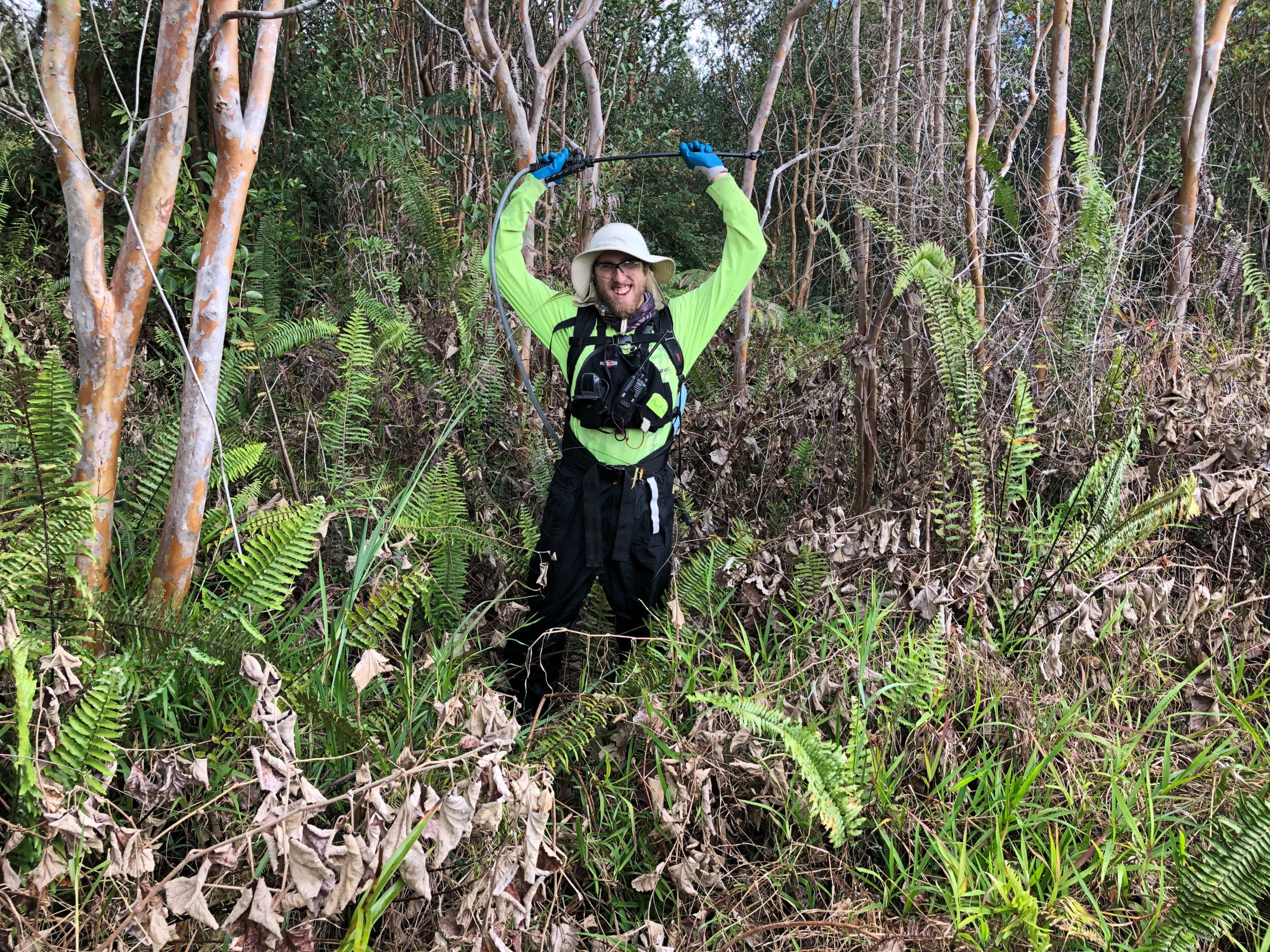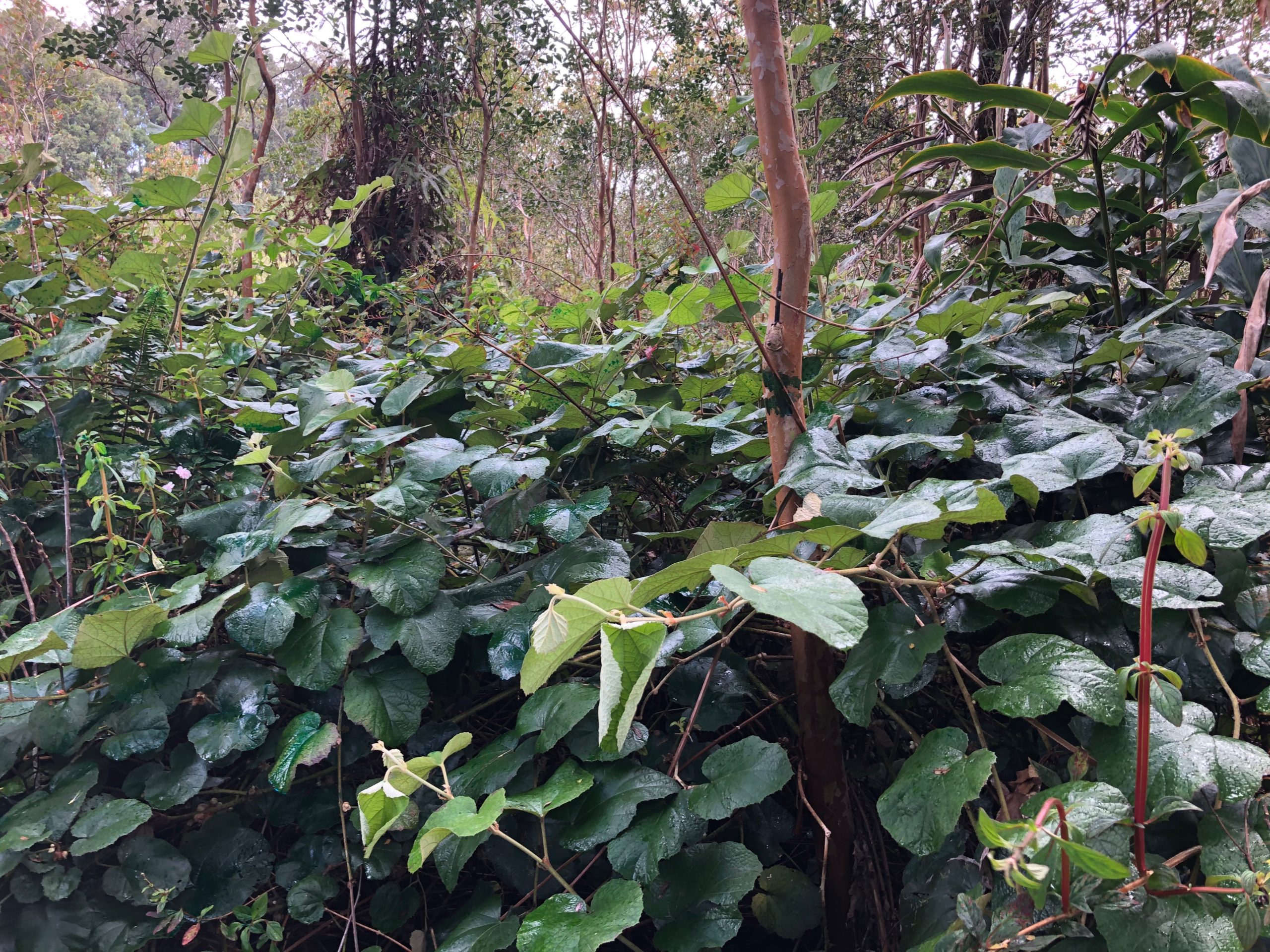
Molucca Raspberry
Containment Species: Report if seen outside of Mountain view
Molucca Raspberry is native to Japan, southern China, and Okinawa. Populations were discovered growing in the upper Puna region of Hawaii island. BIISC has monitored the plant since 2016, and the population spread is relatively slow, primarily by vegetative reproduction. Fruit is rarely observed, and bird dispersal of seeds is a rare occurrence. A state noxious weed, it is illegal to introduce or sell this species.
Impacts:
- Invades forests, open fields, and freshwater habitats
- Forms dense impenetrable thickets that crowd out native plants and make it difficult for hunters and hikers to travel through the forest
- Reproduces after cutting, from root suckers, and vegetatively
- Resprouts after herbicide treatment
- Hybridized with other Rubus species
Description:
- A scrambling shrub
- Has thorns and is covered in hair
- Round, serrated leaves; the lower surface has white to yellowish-brown hair. (Most Rubus species in Hawaii have compound leaves)
- White flowers have 5 petals forming a circle
Molucca Raspberry (Rubus sieboldii)
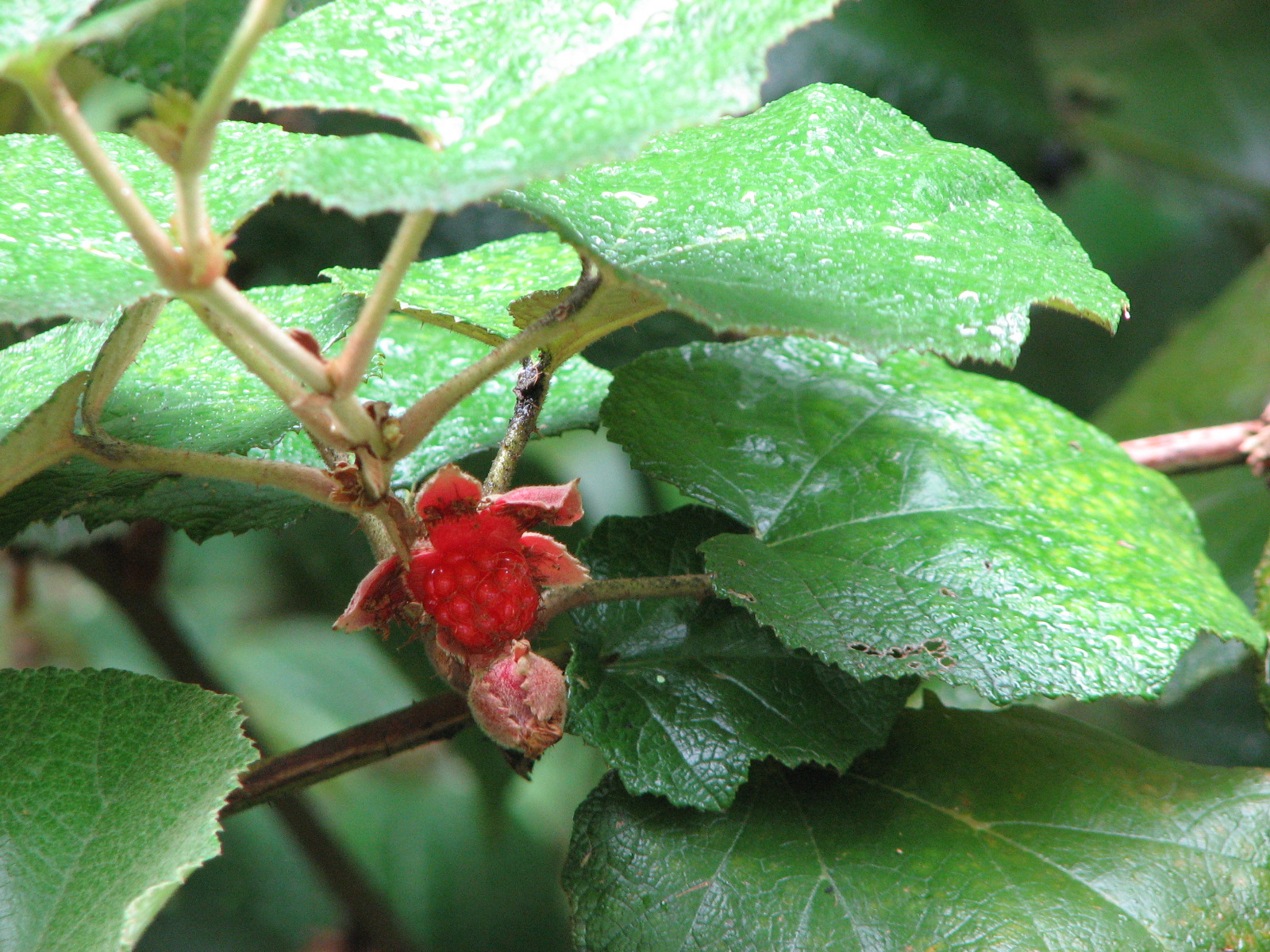
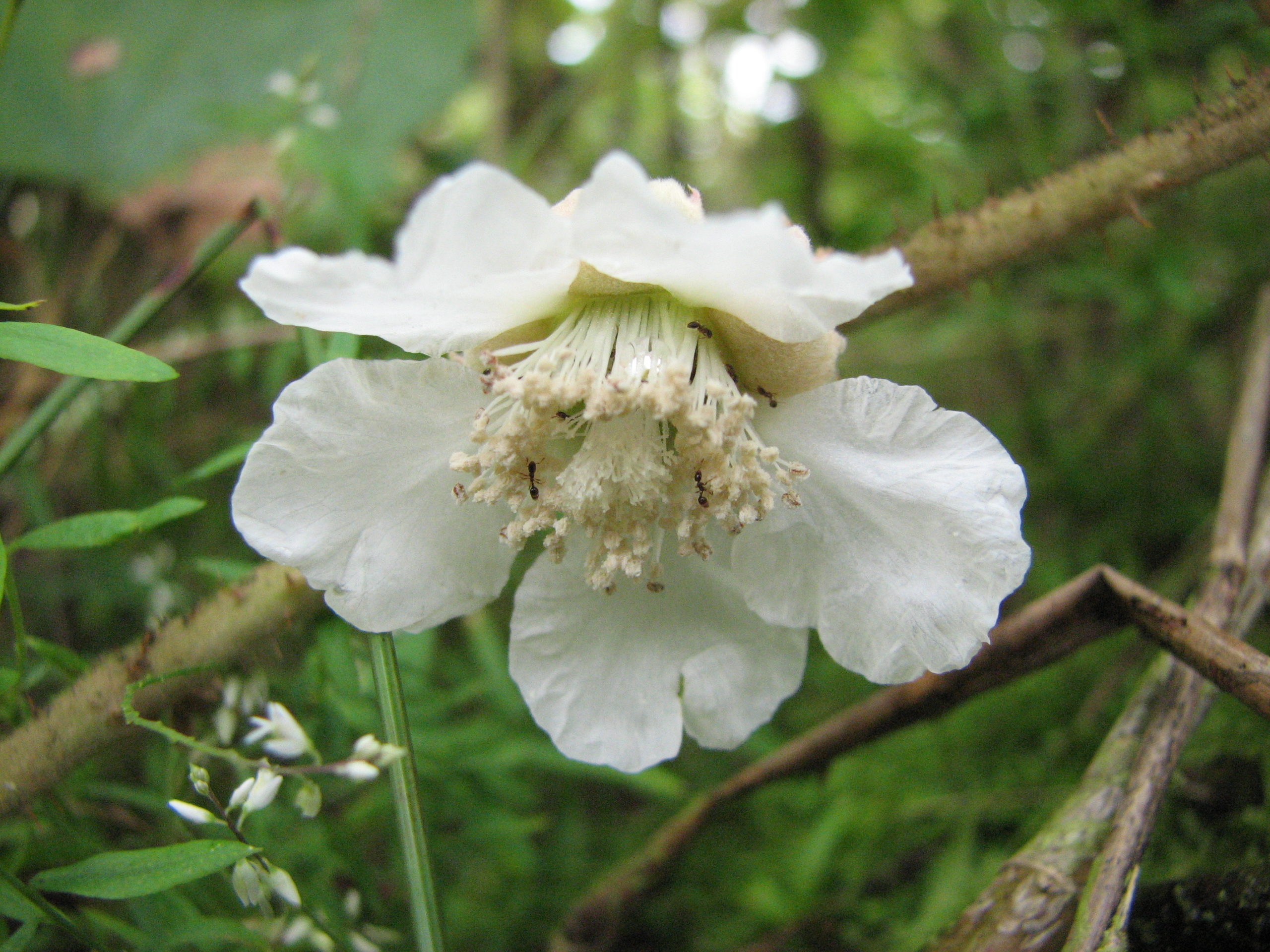
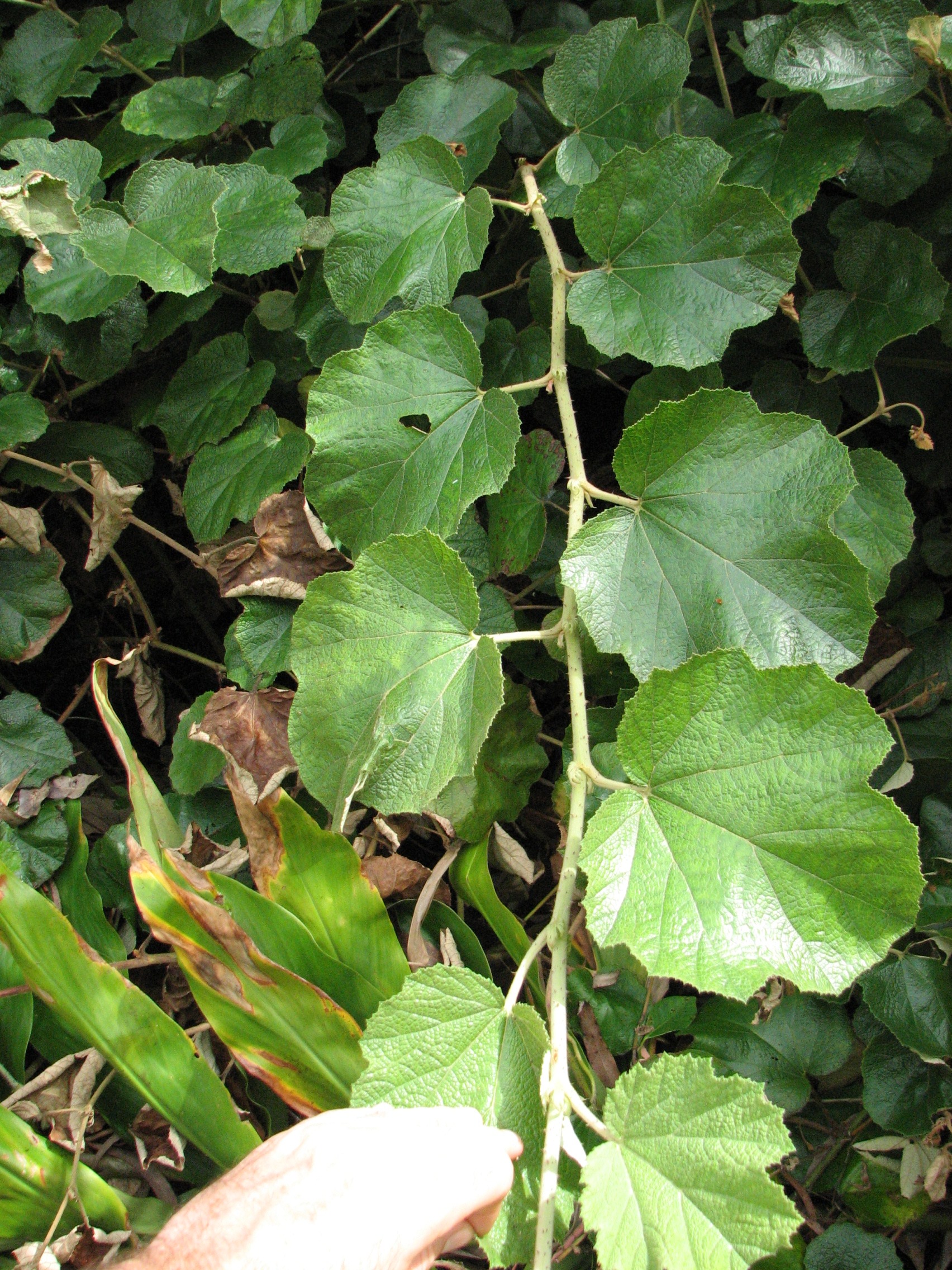
Photos: BIISC
BIISC’s Control Efforts
Since 2016, BIISC staff has controlled more than 85,000 Moluccan raspberry plants! Sadly, that hasn’t made enough of an impact to justify our efforts. Young juveniles are pulled out and hung on a tree or fence to prevent vegetative reproduction. Older plants are controlled with herbicides. However, because this plant grows in thickets and within tall grasses, often only the top part of the plant can be reached. Because of that, control is very difficult.
